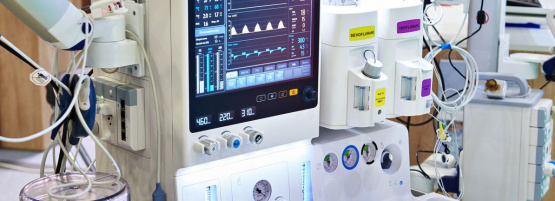How Good Is Smith & Nephew plc (LON:SN.) At Creating Shareholder Value?

Today we'll look at Smith & Nephew plc (LON:SN.) and reflect on its potential as an investment. Specifically, we're going to calculate its Return On Capital Employed (ROCE), in the hopes of getting some insight into the business.
First up, we'll look at what ROCE is and how we calculate it. Then we'll compare its ROCE to similar companies. Then we'll determine how its current liabilities are affecting its ROCE.
Return On Capital Employed (ROCE): What is it?
ROCE measures the amount of pre-tax profits a company can generate from the capital employed in its business. In general, businesses with a higher ROCE are usually better quality. Overall, it is a valuable metric that has its flaws. Renowned investment researcher Michael Mauboussin has suggested that a high ROCE can indicate that 'one dollar invested in the company generates value of more than one dollar'.
So, How Do We Calculate ROCE?
The formula for calculating the return on capital employed is:
Return on Capital Employed = Earnings Before Interest and Tax (EBIT) ÷ (Total Assets - Current Liabilities)
Or for Smith & Nephew:
0.15 = US$969m ÷ (US$8.1b - US$1.5b) (Based on the trailing twelve months to December 2018.)
Therefore, Smith & Nephew has an ROCE of 15%.
Check out our latest analysis for Smith & Nephew
Does Smith & Nephew Have A Good ROCE?
When making comparisons between similar businesses, investors may find ROCE useful. It appears that Smith & Nephew's ROCE is fairly close to the Medical Equipment industry average of 13%. Independently of how Smith & Nephew compares to its industry, its ROCE in absolute terms appears decent, and the company may be worthy of closer investigation.
When considering this metric, keep in mind that it is backwards looking, and not necessarily predictive. ROCE can be misleading for companies in cyclical industries, with returns looking impressive during the boom times, but very weak during the busts. This is because ROCE only looks at one year, instead of considering returns across a whole cycle. Future performance is what matters, and you can see analyst predictions in our free report on analyst forecasts for the company.
Smith & Nephew's Current Liabilities And Their Impact On Its ROCE
Short term (or current) liabilities, are things like supplier invoices, overdrafts, or tax bills that need to be paid within 12 months. Due to the way the ROCE equation works, having large bills due in the near term can make it look as though a company has less capital employed, and thus a higher ROCE than usual. To check the impact of this, we calculate if a company has high current liabilities relative to its total assets.
Smith & Nephew has total liabilities of US$1.5b and total assets of US$8.1b. Therefore its current liabilities are equivalent to approximately 18% of its total assets. Low current liabilities are not boosting the ROCE too much.
Our Take On Smith & Nephew's ROCE
Overall, Smith & Nephew has a decent ROCE and could be worthy of further research. Smith & Nephew looks strong on this analysis, but there are plenty of other companies that could be a good opportunity . Here is a free list of companies growing earnings rapidly.
For those who like to find winning investments this free list of growing companies with recent insider purchasing, could be just the ticket.
We aim to bring you long-term focused research
analysis driven by fundamental data. Note that our analysis may not
factor in the latest price-sensitive company announcements or
qualitative material.
If you spot an error that warrants correction, please contact
the editor at
[email protected]. This article by Simply Wall St
is general in nature. It does not constitute a recommendation to
buy or sell any stock, and does not take account of your
objectives, or your financial situation. Simply Wall St has no
position in the stocks mentioned. Thank you for reading.